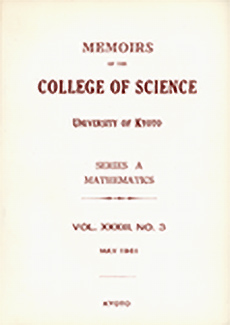Abstract
In §1 of the present paper, we introduce the notion of a virtual linear system on a non-singular projective surface and we clarify the theories of infinitely near points, of divisors and of linear system with preassigned base conditions.
We introduce in §2 the notions of a numerical types and of non-special points with respect to Cremona transformations. They play important roles in §3 in order to prove characterizations and existence theorems of exceptional curves of the first kind and of Cremona transformations. In §4, we introduce the notion of an abnormal curve, and in §5 we give some remarks on superabundance of a complete virtual linear system on a projective plane S. We add some remarks in §6 on the case where the number of base points is at most 9.
The recent paper “On rational surfaces, I” in the last volume of our memoirs is quoted as Part I in the present paper. The notations and terminology in Part I are preserved in this paper, except for that the symbol { } for the total transform of a divisor is changed to ( ) ; see §1. We recall here that an $S$ denotes always a projective plane. A curve will mean a positive divisor on a surface. A divisor $c$ on a surface $F$ is identified with a divisor $c'$ on a surface $F'$ if $c=\sum m_{i}c_{i}$ and $c'=\sum m_{i}c'_{i}$ and if $c_{i}$ and $c'_{i}$ are irreducible and are identical with each other as point sets (identification of points is made by natural birational transformations).
Citation
Masayoshi Nagata. "On rational surfaces, II." Mem. College Sci. Univ. Kyoto Ser. A Math. 33 (2) 271 - 293, 1960. https://doi.org/10.1215/kjm/1250775912
Information





